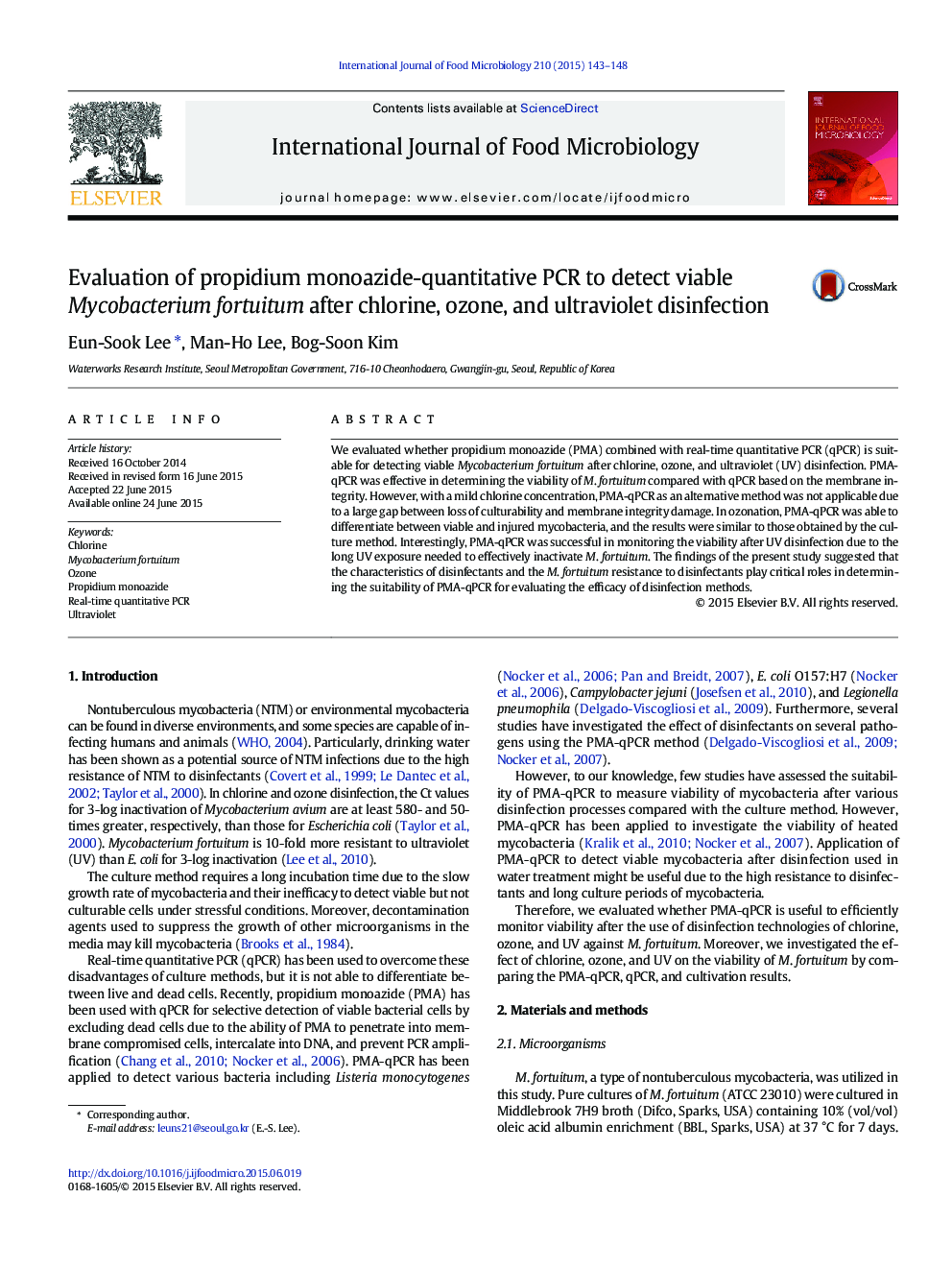| Article ID | Journal | Published Year | Pages | File Type |
|---|---|---|---|---|
| 4366497 | International Journal of Food Microbiology | 2015 | 6 Pages |
•We evaluated the efficacy of PMA to detect viable M. fortuitum after disinfection.•PMA-qPCR was useful in evaluating the killing efficacy of chlorine and ozone.•PMA was especially effective in monitoring the viability of UV-exposed mycobacteria.•However, PMA-qPCR as an alternative to cultivation must be used carefully in chlorination.
We evaluated whether propidium monoazide (PMA) combined with real-time quantitative PCR (qPCR) is suitable for detecting viable Mycobacterium fortuitum after chlorine, ozone, and ultraviolet (UV) disinfection. PMA-qPCR was effective in determining the viability of M. fortuitum compared with qPCR based on the membrane integrity. However, with a mild chlorine concentration, PMA-qPCR as an alternative method was not applicable due to a large gap between loss of culturability and membrane integrity damage. In ozonation, PMA-qPCR was able to differentiate between viable and injured mycobacteria, and the results were similar to those obtained by the culture method. Interestingly, PMA-qPCR was successful in monitoring the viability after UV disinfection due to the long UV exposure needed to effectively inactivate M. fortuitum. The findings of the present study suggested that the characteristics of disinfectants and the M. fortuitum resistance to disinfectants play critical roles in determining the suitability of PMA-qPCR for evaluating the efficacy of disinfection methods.
